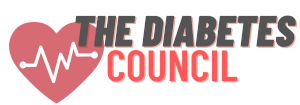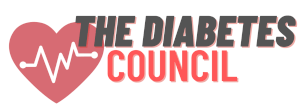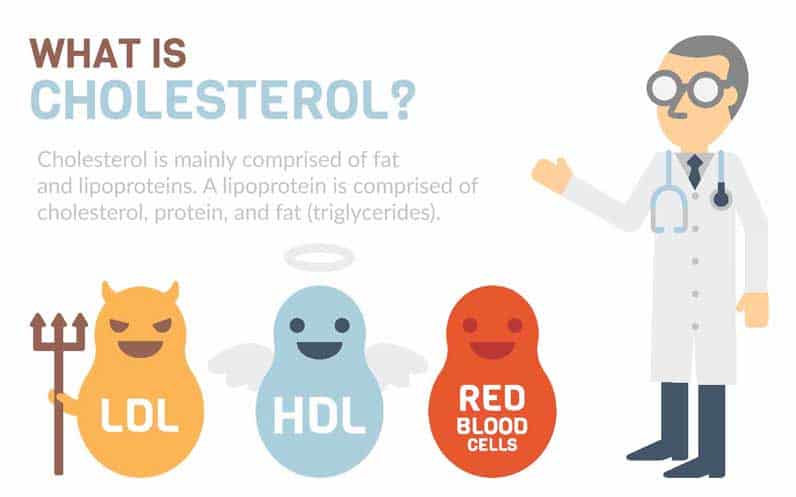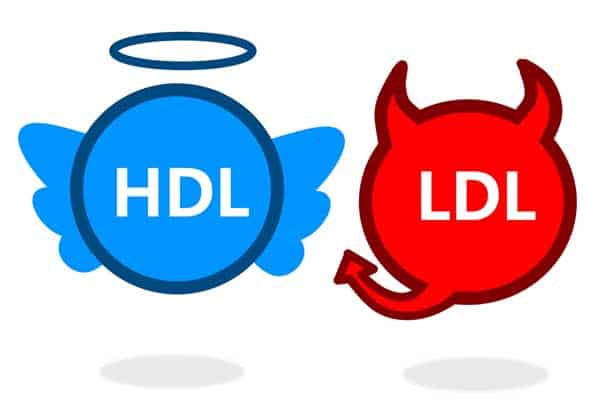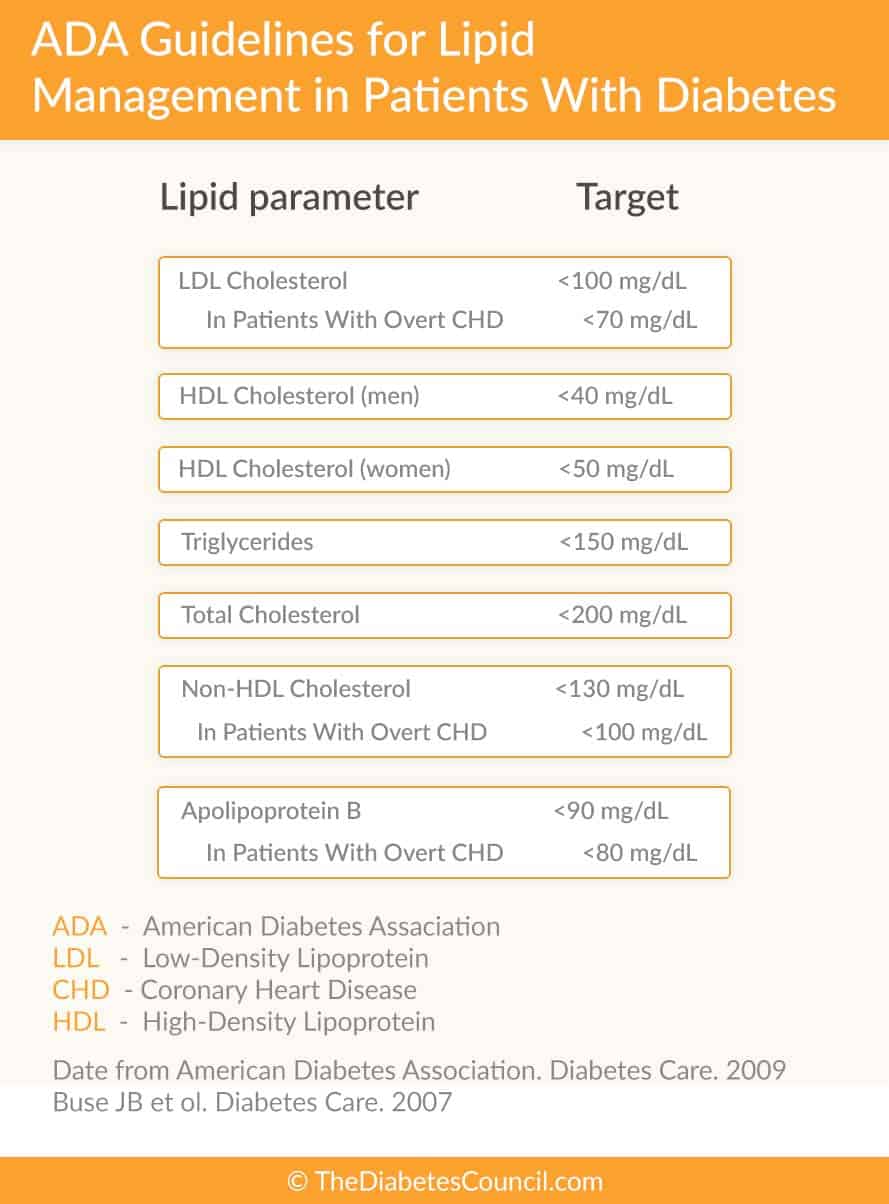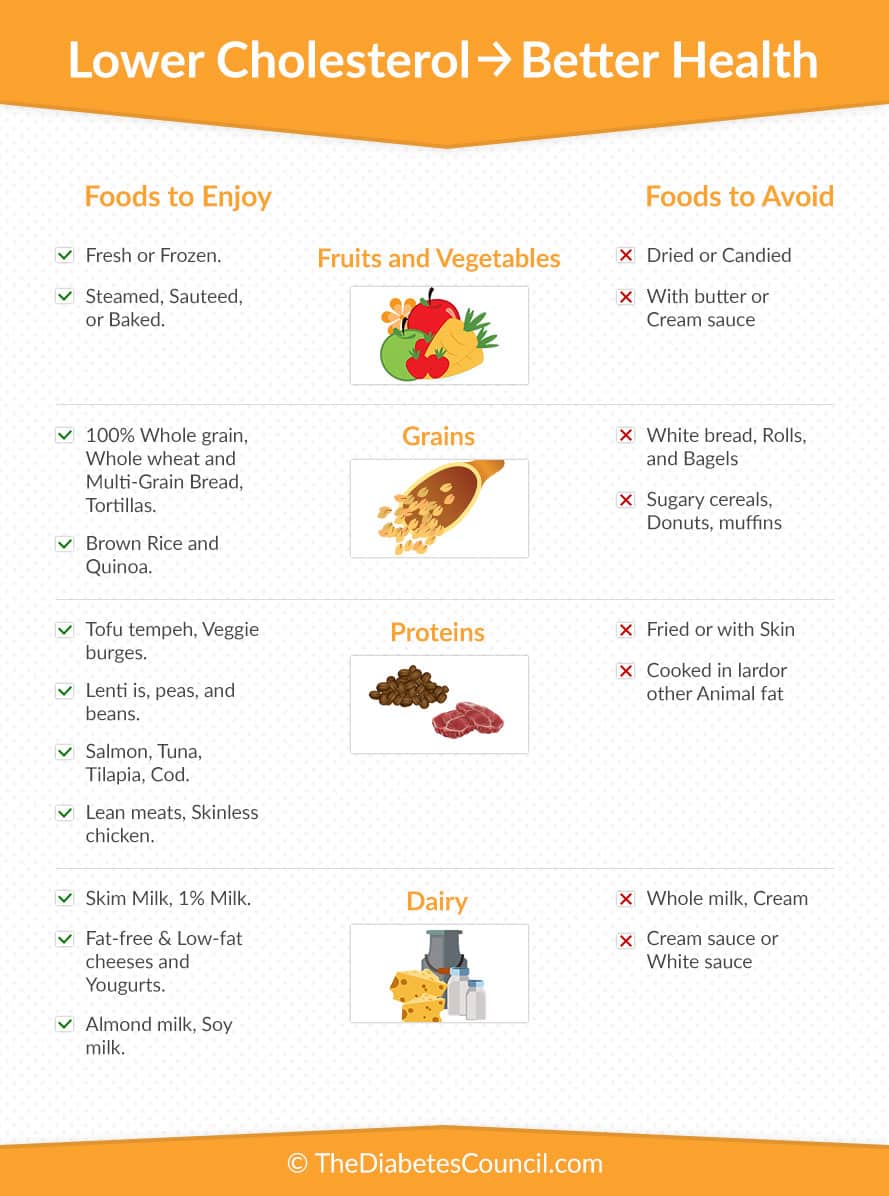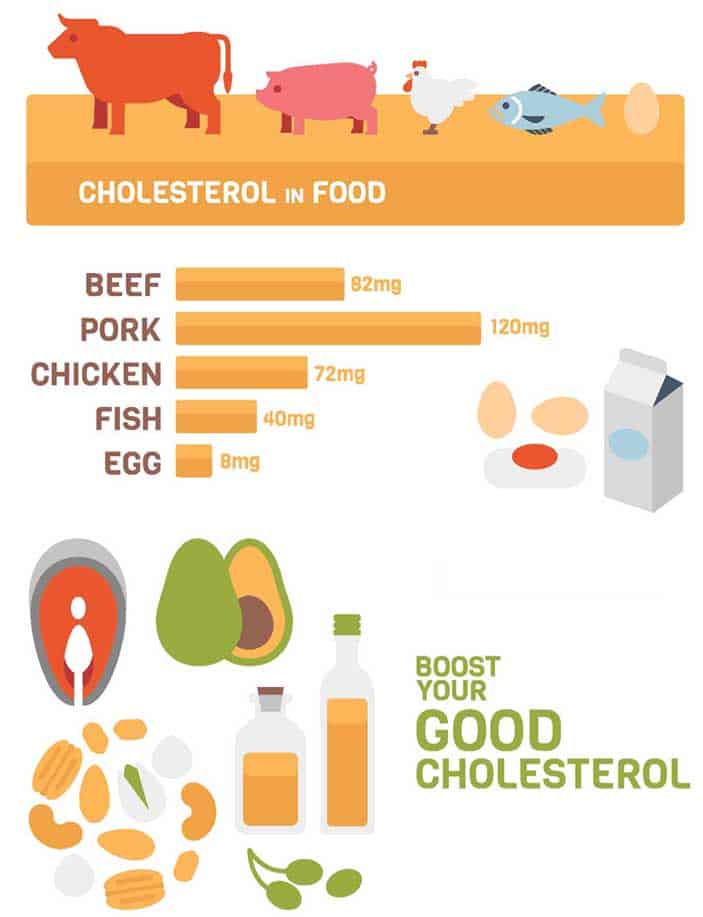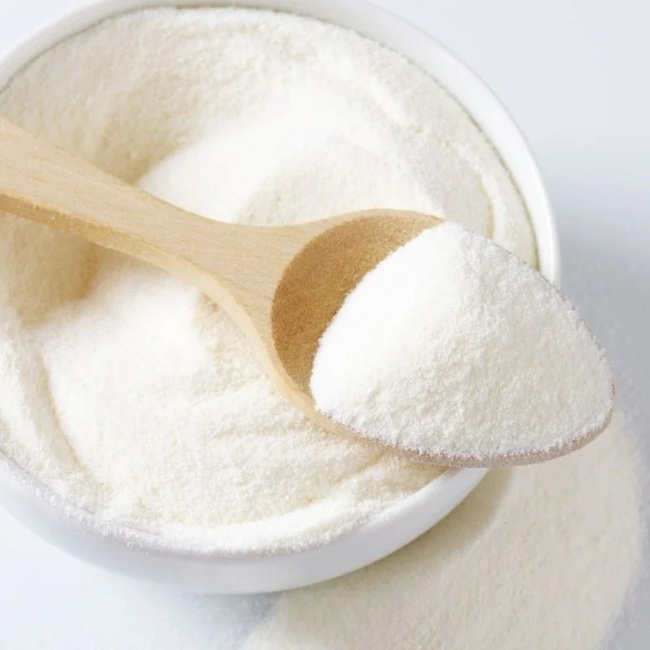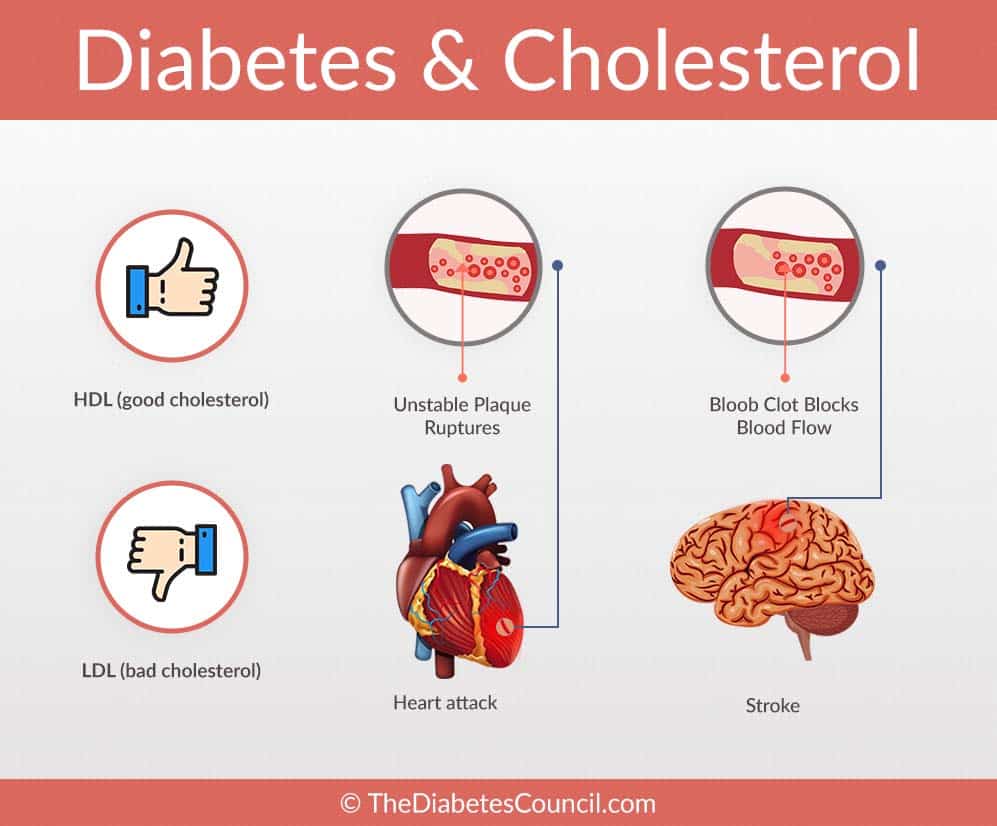
What is the relationship between cholesterol and diabetes? How does cholesterol affect my diabetes, and how do I manage it?
Contents
- Judy contacted TheDiabetesCouncil
- What is cholesterol
- The chemical composition of cholesterol
- What is the connection between LDL-C, triglyceride imbalance, and diabetes?
- Cholesterol and pre diabetes
- Diabetes Prevention Programs for Pre-Diabetes
- How does having lower cholesterol prevent diabetes?
- Does having higher cholesterol levels present a risk factor for diabetes?
- Does having higher cholesterol levels cause diabetes?
- What are the causes of high cholesterol?
- Are there any diets for high cholesterol and diabetes?
- What is the best diet for diabetes and high cholesterol?
- General guidelines for eating heart healthy
- What foods or supplements have natural cholesterol lowering properties
- How to reduce cholesterol in people with diabetes?
- How to treat and control high cholesterol in diabetes
- Cholesterol pills and diabetes
- Statins
- Does cholesterol medication affect diabetes?
- Exercise can help control blood cholesterol diabetes and obesity
- How can high/bad cholesterol be prevented in diabetes
- What Is Average LDL Cholesterol in Diabetes, and Why Is It a Concern?
- What about Type 1 diabetes?
- To sum it all up, does high cholesterol cause diabetes?
Judy contacted TheDiabetesCouncil
When Judy contacted TheDiabetesCouncil, she had questions about her cholesterol. Though her overall number was at 180 mg/dl, and in a normal range, her LDL-C was higher than normal, although mildly elevated, and her HDL-C was low.
Her doctor had explained very little about this to Judy, and she was confused. How can her overall cholesterol number be acceptable, but her other cholesterol numbers were out of range.
What did this mean for Judy’s health? Was she more prone to heart disease and stroke due to these cholesterol numbers? Her triglycerides were a little elevated, too.
We decided to give Judy a guide that would help her to fully understand her cholesterol numbers, and how they affect her cardiovascular health. We also wanted to make sure that Judy and others like her understand how their cholesterol numbers relate to their diabetes. So let’s get started…
What is cholesterol
Cholesterol is mainly comprised of fat and lipoproteins. A lipoprotein is comprised of cholesterol, protein, and fat (triglycerides). Cholesterol comes from two sources. Our body manufactures some cholesterol on its own. In addition, cholesterol comes from animal products, such as milk, eggs, cheese, and meats. Cholesterol has the consistency similar to gum or wax. Small amounts of cholesterol are important for a healthy cell membrane (good cholesterol), and some cholesterol has been deemed, “the bad cholesterol,” due to these cholesterol particles tends to cause atherosclerosis, or hardening of the arteries. Some cholesterol is “good,” cholesterol, that tends to carry the bad cholesterol away and out the body. That is why you want to have the good cholesterol around. We will explain further below, as we get into the details, and the ins and outs of cholesterol, and how it relates to diabetes.
I recommend reading the following articles:
The chemical composition of cholesterol
Technically and chemically, cholesterol is a “steroid alcohol,” namely C27H45OH, and it has the responsibility of moving fluid across cell membranes, and participating in various metabolic functions in the body. As has been said before, everything in moderation. This is also true for cholesterol, as increased “bad” cholesterol, or LDL (low density lipoprotein) increases a person’s risk for heart disease.
Types of cholesterol
When you view your cholesterol numbers, it is good to know that they are broken down into four different numbers that mean different things. On some lab reports, you may see a fifth number for VLDL cholesterol. The following is a breakdown of cholesterol numbers to better familiarize you with the specifics of your blood cholesterol values.
Total cholesterol
Your cholesterol numbers are first reported as a whole. In other words, it is the total number of all of the different types of cholesterol in your bloodstream. Generally, the goal for total cholesterol is to keep it under 200 mg/dl. Just because the total cholesterol number is within the normal range, it doesn’t mean that the other cholesterol numbers will be in the normal range. Many people with diabetes, for example, have dyslipidemias, and have a combination of low “good” cholesterol, and high “bad” cholesterol. Often the total cholesterol number is in the normal range. Let’s take a look at the other numbers that are included in cholesterol blood panels.
Low density lipoprotein (LDL-C-“bad cholesterol”)
When you have high LDLC, you are at a greater risk for cardiovascular disease. These are the larger cholesterol molecules that are responsible for plaques forming on the inside of your arteries. Imagine, if you will, big pieces of sticky gum or wax getting stuck in your small and large vessels. These big, sticky pieces of cholesterol can partially block or eventually completely block your vessels, causing cardiovascular disease and heart attack or stroke. They can also break open, and cause a blood clot to travel to the heart or to the brain, causing a cardiac event or a stroke. People with high LDL-C should take statin medications, and work with their primary care provider in order to manage their high LDL-C. Interventions for high LDL-C include a diet low in saturated and trans fats, as these kinds of fats can raise your LDL-C. In general, you will want to keep your LDL-C below 100. If you are a high risk patient who already has CVD, your doctor may want you to do intensive therapy and keep your LDL-C less than 70 mg/dl. There will be more about this later.
High density lipoprotein (HDL-C “good cholesterol”)
The good news is that some fats are actually good for us. These show up in our blood as the “good cholesterol” molecules, or HDL-C. These molecules of cholesterol are smaller, and not as sticky. You can increase the good cholesterol, or HDL-C, by increasing your intake of foods with “good cholesterol,” and by eating foods that contain monosaturated fats. These include nuts, avocados, and olive oil, along with other oils that are liquid versus solid at room temperature. Your HDL-C number should be greater than 50 mg/dl. Having a low HDL-C also puts you at risk for cardiovascular disease, and conversely, a high HDL-C is heart protective. A higher HDL-C will help your body perform a natural cleansing of LDL-C, which is taken out of the body by HDL-C, via the liver. When triglycerides are high, it tends to lower HDL-C in the bloodstream. Other factors lower HDL-C, including smoking, being overweight, and the lack of physical activity. Also, people with Type 2 diabetes tend to have lower HDL-C. Taking drugs such as steroids and beta blockers for blood pressure can also lower your HDL-C number.
What should my HDL-C blood value be?
A woman should try to increase the good fats in her diet to greater than 50 mg/dl, while men should be at 40 mg/dl or higher.
Triglycerides
Triglycerides are basically just fats. They are pretty common, and are found floating in the bloodstream. What your triglyceride level should be is based upon how old you are and whether you are male or female. When you pair a high LDL-C with triglycerides, it is a recipe for hardening of the arteries, or atherosclerosis. This puts you at a greater risk for a heart attack, problems with your peripheral circulation called Peripheral Vascular Disease, and stroke. Triglycerides tend to promote the build-up of fat and cholesterol deposits in the vessels.
What should my triglyceride blood value be?
Generally, triglycerides should be kept under 150 mg/dl.
What is VLDL cholesterol?
Another cholesterol number that you may not understand is VLDL-C, which stands for “Very Low Density Lipoprotein.” The liver is responsible for making VLDL-C. The liver releases VLDL-C into your blood in order to supply your body with the type of fat mentioned previously above called “triglycerides.” About half of a VLDL-C molecule is comprised of fat or triglycerides. High levels of VLDL-C are correlated with plaque formation in the arteries that can restrict or block the flow of blood. You may or may not see this blood value on your cholesterol panel. Many panels do not include it, due to it is not so easy to measure in the bloodstream. If you do see it on your laboratory report, it is considered elevated if it is greater than 30 mg/dl.
If VLDL-C is not a reported value, it’s important to know that the best way to keep this number low is to keep your triglycerides less than 150 mg/dl. Weight loss and activity will also keep VLDL-C low. If your doctor requires you to take medications to lower your triglycerides, this will also help lower your VLDL-C.
If I already have cardiovascular disease, what should my cholesterol numbers be?
If you already have cardiovascular disease, target numbers are a little bit tweaked. Although your total cholesterol number should still be less than 200 mg/dl, and your LDL-C, or “bad” cholesterol should still be less than 100 mg/dl, your HDL-C, or “good” cholesterol, should be greater than 35 mg/dl, and your triglyceride number should be less than 200 mg/dl. This makes sense, because the good fats being present in your bloodstream will take the bad cholesterol and triglycerides away in the bloodstream to be disposed of via the liver.
What is the connection between LDL-C, triglyceride imbalance, and diabetes?
In a person with diabetes, there is a condition called, “diabetic dyslipidemia.”
It is characterized by a triad that includes:
- low HDL-C
- high LDL-C
- high triglycerides
In research, they have found that there is a link between the insulin resistance in Type 2 diabetes and diabetic dyslipidemia that tends to cause people with Type 2 diabetes to get heart disease or a stroke at a younger age than people without Type 2 diabetes. Due to the size of LDL-C molecules and other factors in people with diabetes, there exists ability for diabetes to effect the lowering of the good cholesterol in the blood, all while promoting an increase in the bad cholesterol. This premature risk is all the more reason to work with your primary care provider to manage cholesterol when you have diabetes. Lifestyle habits likely play a role in the increased risk, with some people developing dyslipidemia prior to a diagnosis of Type 2 diabetes. Therefore, it is important to manage cholesterol for general health throughout life.
Cholesterol and pre diabetes
A dyslipidemia may clue providers in to the need to test a person for pre-diabetes or diabetes due to the connection between the insulin resistance in Type 2 diabetes and dyslipidemia. A patient’s A1C may show in the pre-diabetes range of 4.8-5.6 percent. This serves to give the person a “heads up” related to managing their dyslipidemia and pre-diabetes state with diet and exercise. The goal in pre-diabetes is generally to lose 5-7 percent of overall weight, and to obtain 150 minutes of physical activity in a week, along with healthy eating, in order to prevent Type 2 diabetes.
Diabetes Prevention Programs for Pre-Diabetes
Diabetes Prevention Programs have popped up all around the country. These programs are geared toward achieving weight loss, nutritional, and activity goals in order to prevent Type 2 diabetes later on. The Centers for Disease Control has a model of Diabetes Prevention Programs (DPP), and organizations such as the YMCA and others have started to bring these programs to communities. Some insurers have hopped on board with providing these programs, and scholarships are also available in some areas. Check with your individual insurance carrier for benefits that might include these programs, and with local programs providing DPP for scholarship opportunities. On top of decreasing your chances of getting Type 2 diabetes, you will be learning healthy lifestyle changes, including a heart healthy diet, which will also help to get your cholesterol numbers where they need to be.
How does having lower cholesterol prevent diabetes?
Seeing that dyslipidemias appear to be a precursor at least for Type 2 diabetes, it stands to reason that having no dyslipidemia, or having all cholesterol numbers in the normal range, would likely help to prevent the onset of Type 2 diabetes.
Does having higher cholesterol levels present a risk factor for diabetes?
Diabetes has actually been determined to be a coronary heart disease (CHD) risk factor. So just like smoking and inactivity, diabetes predisposes you to CHD. To put this into perspective, the risk for a CHD in a diabetic patient with no previous CHD is the same as for those of people without diabetes, and no heart disease. That’s significant. Not only that, but people with diabetes are two to four times more likely to die from a coronary event, with risk of death especially greater in the first 28 days following a coronary event. Women with diabetes were even more likely to die following a coronary event. Research in this area has been replicated, and is reliable.
Does having higher cholesterol levels cause diabetes?
There is definitely a relationship. Further research may need to be done in this area. For now, it’s a case of “which came first, the chicken or the egg.” It does appear through research that one affects the other and vice versa.
What are the causes of high cholesterol?
Many different things can cause a person to have high cholesterol levels. Some we can control, and some we cannot control. The factors that we cannot control are:
- our genetics
- our age
- our gender
- certain diseases and conditions that we already have, such as thyroid disorder
Though we cannot control our genetics, how old we are, or whether we are male of female or have a certain disease for the most part, there are risk factors for high cholesterol that can be controlled. Interestingly, the same risk factors that can be controlled to bring down high cholesterol also can bring down our risk for diabetes.
They are…
- our nutritional intake, including how much bad and good cholesterol is in the foods we eat
- our weight as extra pounds increase cholesterol levels
- whether or not we are physically active
- whether or not we are taking certain medications
Symptoms of high cholesterol and diabetes
There are no symptoms of high cholesterol, whether or not you have diabetes along with it. The only way that you can know that you have high cholesterol numbers, is to have your doctor perform a laboratory test once a year. The test is called a Cholesterol Panel, or a Lipid Panel, and it shows your total cholesterol number, along with values for your LDL-C, HDL-C, and Triglycerides. Some tests further break down cholesterol to VLDL (Very Low Density Lipoproteins), but some tests do not. Generally, keeping triglycerides down will control VLDL-C, as it is composed of fifty percent triglycerides.
Dangers of high cholesterol and diabetes
There is an increased risk for cardiovascular disease with diabetes. Dyslipidemia or problems with cholesterol compound the problems presented by high blood glucose. In other words, it’s a double whammy. A little further along in this article, we will talk about diabetes as an actual risk factor for heart disease.
Are there any diets for high cholesterol and diabetes?
Yes, when you have high cholesterol you should follow a heart healthy diet. You should increase your “good” cholesterol intake, and decrease your “bad” cholesterol intake. Remember, the “good” cholesterol carries the “bad” cholesterol out of your body by way of the liver, so you will want to know how to increase those oils and foods that contain HDL-C, and decrease the foods that contain LDL-C.
What is the best diet for diabetes and high cholesterol?
People with diabetes should learn to count their carbohydrates, and they should learn to eat a “heart healthy” diet. It’s not that difficult to eat heart healthy with a little preparation. When you have both diabetes and high cholesterol, your risk of heart disease and stroke is heightened, and you need to lower your risk for cardiovascular problems down the road.
Speak to a Registered Dietician or a Certified Diabetes Educator
For starters, ask your primary care provider about an appointment with a registered dietician or a certified diabetes educator. Either one of these folks can help you to get a handle on your diabetes and your cholesterol, and help you to plan for heart healthy meals that are good to control your diabetes and get your cholesterol numbers in the right range. It doesn’t have to be drab or boring either. You can eat a variety of whole foods. You just need to learn what is right for you, and what may work against your diabetes and your dyslipidemias.
General guidelines for eating heart healthy
There are some general nutritional guidelines that you should follow in order to stay heart healthy. When you go to the grocery store, pick up the items listed below. Notice that you won’t be going on the inside aisles of the grocery store. More likely you will be working the parameter or outside aisle. That’s where you will find “whole,” heart healthy foods. Leave the frozen foods and packaged foods on the shelf. You will want to pick up some packaged foods from the middle aisles, but they will be whole grain products. This is good. We want you shopping for “real,” not processed foods for the most part. They are simply healthier for you.
Pick up a variety of whole grain products
You will want to pick up whole grain breads, corn meal, oatmeal, quinoa, Israeli couscous, bulgur, and the like, and stock your cabinets that will be in the whole grain category. Most rice and pastas have a whole grain version. Pick one of those up instead of the regular pasta or rice.
Pick up a variety of fresh fruits and vegetables
In addition to the fiber from whole grain products, make sure to get a variety of fiber from fresh fruits and vegetables. Fiber helps lower your cholesterol, and it also keeps blood glucose steady, helping to lower it over time. So pile on the fiber. Use fruits and veggies to snack on during the day to up your intake of these nutrient and fiber loaded foods. You can get cheaper fruits and vegetables that are in season at your local farmer’s market.
Use extra virgin olive oil to cook with
When you have high cholesterol and diabetes, you should increase the good fats, or monosaturated fats such as olive oil in your diet. In general, fats that are liquid at room temperature are better to use than fats that are solid at room temperature, such as butter, margarine, vegetable shortening, or animal fat/lard. These all contain saturated and trans fats, which will raise cholesterol, namely LDL-C and triglycerides.
Cut down on foods that are high in cholesterol
Reading food labels helps when trying to cut down on foods high in cholesterol. Look for labels that say “low cholesterol,” or “no cholesterol.” Look for foods that are low in fat. You can cut down on egg yolks, and eat more egg whites. Cut down on fried foods in general, and things like gravy, biscuits, and other foods known to be high in fat. Bake, grill, or broil meats, and trim excess fat.
What foods or supplements have natural cholesterol lowering properties
There are a number of supplements that people use to lower LDL-C and triglycerides. Make sure to talk with your health care provider about which ones are safe for you to try. Some listed are proven to reduce cholesterol, and some have not been proven to lower cholesterol. It’s important to have a conversation with your doctor if you decide to start any new supplements.
Soluble versus insoluble fiber
Foods such as whole wheat bread and whole grain cereal have insoluble fiber. This is great for decreasing constipation, but doesn’t do much to lower cholesterol numbers. Fiber found in thinks like oats and oat products, dried peas and beans, such as lentils or chickpeas, barley, flaxseed and nuts, as well a brussel sprouts and prunes, oranges, and apples have something called “soluble” fiber. This kind of fiber is great to help lower LDL-C or “bad” cholesterol by piggy backing it out through the gut. In other words, it grabs the bad cholesterol, and moves it on out of the body.
In order to lower LDL-C with soluble fiber foods, you need to be eating between 7 and 13 grams of it in a day. The rest you should get from insoluble fiber, so that you are getting a total of 20-35 grams per day of total fiber. This could get you up to seven percent LDL-C lowering, and a two to three percent total cholesterol reduction. And that’s not too shabby, so best to increase fiber in your diet when you have high cholesterol.
Psyllium-based fiber supplements or beta glucan supplements
You can buy fiber that you drink so that you don’t have to eat so many high fiber foods. They do cause an increase in stomach gas, so beware. They can also bloat you, cause cramping or even diarrhea. You could also lose some vitamins and minerals along the way, as these supplements may decrease absorption of them. Some people develop an allergy to psyllium, which could be a problem for some people.
What are phytosterols?
Phytosterols have a like chemical composition to cholesterol. They are commonly called plant stenols and sterols. These are found in plant cell membranes. They provide a bit of competition for cholesterol, and they will lower total and LDL-C cholesterol because they displace cholesterol and get absorbed by the intestines instead. Two grams per day of a phytosterol will lower cholesterol by 15 percent, so it’s worth looking into after you speak with your provider about it. You don’t have to worry about the evidence behind this one. It’s backed by National Cholesterol Education Program. To get enough from fruits, vegetables, vegetable oils, nuts, and the like, would be difficult. You can purchase a supplement, or buy foods that are fortified with it, which includes vegetable oil spreads, juice, yogurt, rice or soy milk, chocolate, and snack bars. You can take them with statins or fibrate medications for cholesterol, and they don’t cause you any ill effects.
What about soy proteins?
There is some doubt as to the benefit of soy proteins when it comes to lowering total cholesterol, LDL-C, and triglycerides. According to research in 2006,t may give you a lowering ability of about three percent, which is much lower than previously thought after the first round of research studies went through in the 1990s. Generally, 25 grams of soy protein is required to get the three percent lowering, and that is seemingly quite a large amount of soy protein to consume. Therefore, some of the other choices mentioned here may do a better job of lowering cholesterol than soy proteins. At any rate, you can find it in tofu, tempeh, edamame, miso, soy milk, cheese, or other soy products. These could include products like vegetarian burgers, hotdogs, and other meats made with soy protein. Avoid these if you are a woman that is being treated for breast cancer that is estrogen-sensitive. This is due to certain kinds of treatments associated with these cancers that affect estrogen levels.
Does niacin help?
Niacin is a B vitamin. It turns the food you eat into energy. Normally, it’s recommended to get 16 mg per day for men, or 14 mg per day for women. You shouldn’t get more than 35 mg per day of niacin by way of food or vitamins combined. Niacin is found in dairy products, lean meat, chicken, fish, eggs, and nuts. However, when given in large dosages, up to 2,000 mg two to three times a day, it can increase your HDL-C, or “good” cholesterol by a whopping 15 to 35 percent. Another great effect is that the increase in HDL-C also serves to lower LDL-C and triglycerides. That’s worth a try with your doctor’s approval, and a prescription. Be cautioned that large doses of niacin need the supervision of your healthcare provider. It can cause liver damage.
What in the world is red yeast rice?
Weird as it sounds; red yeast rice is a fungus that grows on rice. Asian countries use it for a food coloring and a medication. It has become popular in western countries because it tends to stop cholesterol production in the liver. It has sort of a natural form of statin in it, like the statin medications used to lower cholesterol. If you are one of the people that has trouble taking statins due to side effects, or don’t want to take them for one reason or another, ask your doctor if red yeast rice might help you lower your cholesterol.
In one study, subjects that got muscular pain while on statins were able to take 1800 mg of red yeast rice twice a day for 24 weeks. The average drop in LDL-C was 35 mg/dl. In China, one study showed a 30 percent reduction in cardiovascular risk with long term use of red yeast rice. In the US, it’s a supplement so it’s not FDA regulated. Keep that in mind when taking any supplements in the US.
Always talk with your doctor, and have him or her to check your liver enzymes before starting red yeast rice supplements.
Can Policosanol help?
Policosanol comes from sugar cane, beeswax, wheat germ, and rice bran. The first round of studies showed that it could lower LDL-C about as much as statin medications. Later studies found no benefit, and then those studies were replicated. This one therefore, is not recommended to try, though you may read about it elsewhere.
Does Guggulipid work?
Guggulipid can lower triglycerides by up to 14 percent in those patients with the highest LDL-C values, according to some studies done in India. Guggulipid was shown to lower cholesterol in some studies, and to increase cholesterol in other studies. It seems to have an effect on inflammation in the body by lowering C-reactive proteins by 28 percent. It’s not recommended for those with liver disease, kidney disease, or IBS (Inflammatory Bowel Disease).
Will garlic help?
Garlic has been found to drop LDL-C only temporarily. It may not have a lowering affect after six months of use. There are some other heart benefits to garlic besides just cholesterol lowering, so don’t quit using garlic just yet. It can slightly lower blood pressure, and that’s usually a problem in people with diabetes also. Garlic doesn’t mix well with blood thinners, and increases the effects at high doses of a supplement.
I’ve heard about ginger, but does it work to lower cholesterol?
Ginger has been used in traditional medicine for years to help with stomach issues, arthritic joints, as well as heart conditions. It works for motion sickness, morning sickness in pregnancy, and it may lower cholesterol. There has only been one rather small study that looked at the cholesterol lowering effects of ginger. Subjects took 3,000 mg per day for 45 days. They had an average drop in total cholesterol by 13 mg/dl. Triglycerides also dropped by 9.5. Even so, larger studies need to be done to validate this finding. As a spice, ginger is tasty in recipes.
What about Flaxseed?
Flaxseed has enjoyed a wide range of press lately. It is a plant product containing omega 3 fatty acids. It is supposed to aid in digestion and lower LDL-C and triglycerides, and some studies support this. Studies involved whole flaxseed, and also flaxseed oil. Consuming a tablespoon per day lowered total cholesterol and LDL-C. The only side effects are bloating, nausea and diarrhea. Taking it with medications slows digestion.
Other heart healthy, cholesterol lowering diet tips
- limit oils solid at room temperature – this includes butter and margarine, lard and animal or vegetable shortening
- eat less red meat and animal products, such as cheese, whole milk, and fried foods
- avoid fast foods
- use more olive oil, corn, canola, peanut and sunflower oils
- increase nuts and seeds in the diet
- increase fish to twice weekly with omega 3 fatty acids (salmon, sardines, trout)
- add walnuts and flaxseed to your diet
- increase fiber both insoluble and soluble from fresh fruits and veggies, whole grains, dried beans and peas
- watch your sodium or salt content
- avoid canned, processed, and frozen foods
- avoid lunch meats and other smoked meats high in sodium or salt
- look for servings of food to have less than 140 mg of sodium or salt per serving
- pick low salt and no salt products
- choose low fat dairy products or dairy alternatives such as soy, rice, or almond milk
- choose high fiber whole grains, especially high in soluble fiber like barley, whole grain pasta, or brown rice
- choose a variety of fresh vegetables, with a bounty of color
- include more meatless dishes in your diet, choosing tofu, beans, or lentils instead
- choose leaner cuts of meat, trim fat from meats, and remove skin from chicken
How to reduce cholesterol in people with diabetes?
For people with diabetes and related dyslipidemia, diet and exercise may not be enough to lower LDL-C to less than 100 mg/dl. People with diabetes may need a statin or other medication in order to get their cholesterol to goal. Care should be taken to get people with diabetes to their cholesterol goals, as it can significantly impact their health over the long term if blood glucose and blood pressure are also controlled.
How to treat and control high cholesterol in diabetes
The UKPDS, or UK Prospective Diabetes Study, showed that tight control over blood glucose is needed to prevent complications of diabetes. However, it was found that tight blood glucose is not enough to prevent cardiovascular disease in diabetics. Overall, there must be significant effort to reduce all risk factors. This can include weight loss, increasing exercise, controlling blood pressure and dyslipidemias.
Cholesterol pills and diabetes
There are medications that lower cholesterol. Since people with diabetes have an increased risk for heart disease, they should take medications to reduce their cholesterol if directed to do so by their doctor. Let’s take a look at medications that may be prescribed to lower cholesterol
Statins
Statins are the first line of defense after lifestyle changes have failed when trying to lower cholesterol. What they do is they keep cholesterol from forming, which in turn lowers blood cholesterol levels. Statins will raise HDL-C, or “good” cholesterol, and they will lower triglycerides, though moderately so.
List of statin drugs to lower cholesterol
The doctor may prescribe one of the following medications to help lower cholesterol:
- Atorvastatin (Lipitor)
- Fluvastatin (Lescol)
- Lovastatin.
- Pitavastatin (Livalo)
- Pravastatin (Pravachol)
- Rosuvastatin (Crestor)
- Simvastatin (Zocor)
Does cholesterol medication affect diabetes?
For the most part, people with diabetes can take statin medications. Some common side effects experienced while taking statin medications are:
- liver problems and elevated liver enzymes
- headaches
- stomach upset (pain, constipation, gas, diarrhea, and vomiting)
- rash
- problems with muscles (myopathy)
- problems with memory
- increased risk of developing Type 2 diabetes
Isn’t it ironic? What about that last one – “increased risk of developing Type 2 diabetes”
Is that possible? Unfortunately, yes. Increased doses of statins are associated with an increase in Type 2 diabetes diagnoses. There is understandably much debate about this, with researchers split over whether diabetes risk outweighs the drug’s benefits.
Further reading:
The consensus has been that heart benefits are greater than diabetes risk.
So should I take statins?
If you want to reduce your risk for heart disease, then you should take statins. Currently, statin use is recommended by the American Diabetes Association for people with diabetes who have high cholesterol. Some people stop taking statins due to adverse side effects. Talk with your doctor before stopping any of your medicines. You shouldn’t consume grapefruit if you take statins, as grapefruits increase uptake, and may increase side effects. You will want to avoid fibrates, warfarin (Coumadin), some antibiotics, and some HIV medicines. Talk to your pharmacist to see if any drugs you are taking might interact with statins.
Exercise can help control blood cholesterol diabetes and obesity
Exercise is the “poly-pill,” therefore it helps with everything. Blood pressure, blood glucose, blood cholesterol, weight, and state of mind are all affected by exercise in a positive way. Therefore, beginning a modest program of aerobic exercise where you are getting 150 minutes of exercise per week is helpful when trying to lower your cholesterol. This is not such an easy task, and the National Health and Nutritional Examination survey showed that only 48 percent of people with diabetes were able to obtain a cholesterol goal of less than 200 mg/dl. Even more discouraging, less than 10 percent of people with diabetes were able to achieve all three goals. LDL-C goals were particularly bleak, as only 20 percent of people with diabetes were able to obtain an LDL-C of less than 100 mg/dl. It becomes clear that managing cholesterol in people with diabetes needs improvement, and plays up the need for intensive statin therapy in people with diabetes.
How can high/bad cholesterol be prevented in diabetes
With lifestyle changes and intensive statin therapy, we can significantly affect the rate of cardiovascular disease in people with diabetes. Even with LDL-C levels at borderline high and not greater than 160 mg/dl in most diabetics, these borderline numbers have been shown to significantly affect heart health in people with diabetes.
What Is Average LDL Cholesterol in Diabetes, and Why Is It a Concern?
Looking at the Framingham Heart Study from 30 years ago, it was established that people with diabetes have a two to three greater likelihood of developing heart disease as their peers with no diabetes. Let’s look at why below…
More connections between high cholesterol and diabetes
Smaller, denser LDL-C molecules
LDL-C cholesterol levels in people with diabetes can underestimate the cardiac risk that is posed. Borderline high LDL-C levels, along with Type 2 diabetes pose a 2 to 3 times greater risk for CVD than for people without diabetes. The LDL-C particles are proportionally smaller and are denser in people with diabetes. These particles are more likely to invade the walls of arteries and cause a significant cardiovascular problem. This typically leads to more hardening of the arteries in people with diabetes due to the small and dense LDL-C particles.
There is also a relationship between the smaller, denser, LDL-C molecules and an increase in triglycerides. It is the insulin resistance and insulin sensitivity that is the metabolic syndrome of diabetes that causes elevated triglycerides. Insulin resistance in muscles converts carbohydrate energy into triglycerides that are generated in the liver. This tends to make VLDL-C, which means that the LDL is loaded down with triglycerides. It is in persons with greater than 100 mg/dl triglycerides that we see the smallest and densest VLDL-C particles forming. This in turn increases cardiovascular disease since these small particles of “bad” cholesterol are predominant in the bloodstream.
Is it correct to focus on LDL-C lowering therapy for those with diabetes?
The American Diabetes Association targets the lowering of LDL-C in guidelines. The treatment of minimally elevated LDL-C should be considered of utmost importance in reducing cardiovascular risk in people with diabetes. If other risk factors are there, it becomes even more important. Statins are considered the first line, and they should be started in people with Type 2 diabetes with even mildly elevated LDL-C. Statins have shown to not only decrease LDL-C, but triglycerides, and to mildly elevate HDL-C. In research, this therapy has shown to greatly reduce CVD in people with diabetes by about 25 percent.
Intensive therapy to lower LDL-C
In more intensive therapy, LDL-C is lowered to less than 70 mg/dl. If a person with diabetes can lower their LDL-C to less than 70 mg/dl, they can achieve a 30-50 percent reduction in heart disease. Therefore, intensive therapy with statins may be more effective in high risk patients. The hesitation from clinicians comes from safety concerns. Intensive statin therapy may cause muscle toxicity and elevated liver enzymes, which is a reason to proceed with caution with intensive therapy.
Higher insulin levels raise LDL-C levels, lower HDL-C levels, and raise triglyceride levels
Another problem in diabetes is high insulin levels. The high levels affect the number of molecules of cholesterol in the bloodstream.
Does having dyslipidemia affect whether or not you get Type 2 diabetes?
High cholesterol can be a predicting factor for diabetes. High cholesterol levels often start out with insulin resistance, so it should clue providers in to check for pre-diabetes and Type 2 diabetes if there is a dyslipidemia.
What about Type 1 diabetes?
For decreasing cardiovascular risk in Type 1 diabetes, blood glucose control seems to make the greatest difference. Having a blood glucose in your target range will get a person with Type 1 diabetes very close to normal as far as cholesterol levels are concerned. People with Type 1 diabetes that is not managed well have increased triglycerides and also they have lower HDL-C, or “good” cholesterol. These two things contribute to cardiovascular disease in Type 1 diabetics.
To sum it all up, does high cholesterol cause diabetes?
We have learned that diabetes is a risk factor for cardiovascular disease, but does high cholesterol cause diabetes? Researchers are still unsure. However, there are some characteristics of diabetes that seem to affect cholesterol levels. To review, they are…
- people with diabetes have smaller and denser cholesterol particles that attach to arteries forming plaques
- high glucose in diabetes contributes to LDL-C (bad) cholesterol staying in the bloodstream longer than it normally would
- lower HDL-C and higher triglycerides in Type 2 diabetes increase cardiovascular risk
- circulation difficulties compound the problems of high cholesterol
- high triglycerides have been shown to be a risk factor for Type 2 diabetes
I hope you learned the relationship between cholesterol and diabetes. If you have any comments on the connection of cholesterol and diabetes let us know.
TheDiabetesCouncil Article | Reviewed by Dr. Christine Traxler MD on June 03, 2020
References
- http://www.heart.org/HEARTORG/Conditions/More/Diabetes/WhyDiabetesMatters/Cholesterol-Abnormalities-Diabetes_UCM_313868_Article.jsp#
- http://www.webmd.com/a-to-z-guides/condition-15/diabetes/cholesterol-tests
- https://www.endocrineweb.com/guides/high-cholesterol-diabetes/4-tips-eating-well-high-cholesterol
- https://www.endocrineweb.com/guides/high-cholesterol-diabetes/4-tips-eating-well-high-cholesterol
- http://www.webmd.com/cholesterol-management/guide/diseases-linked-high-cholesterol
- http://www.diabetes.ca/diabetes-and-you/healthy-living-resources/diet-nutrition/cholesterol-diabetes
